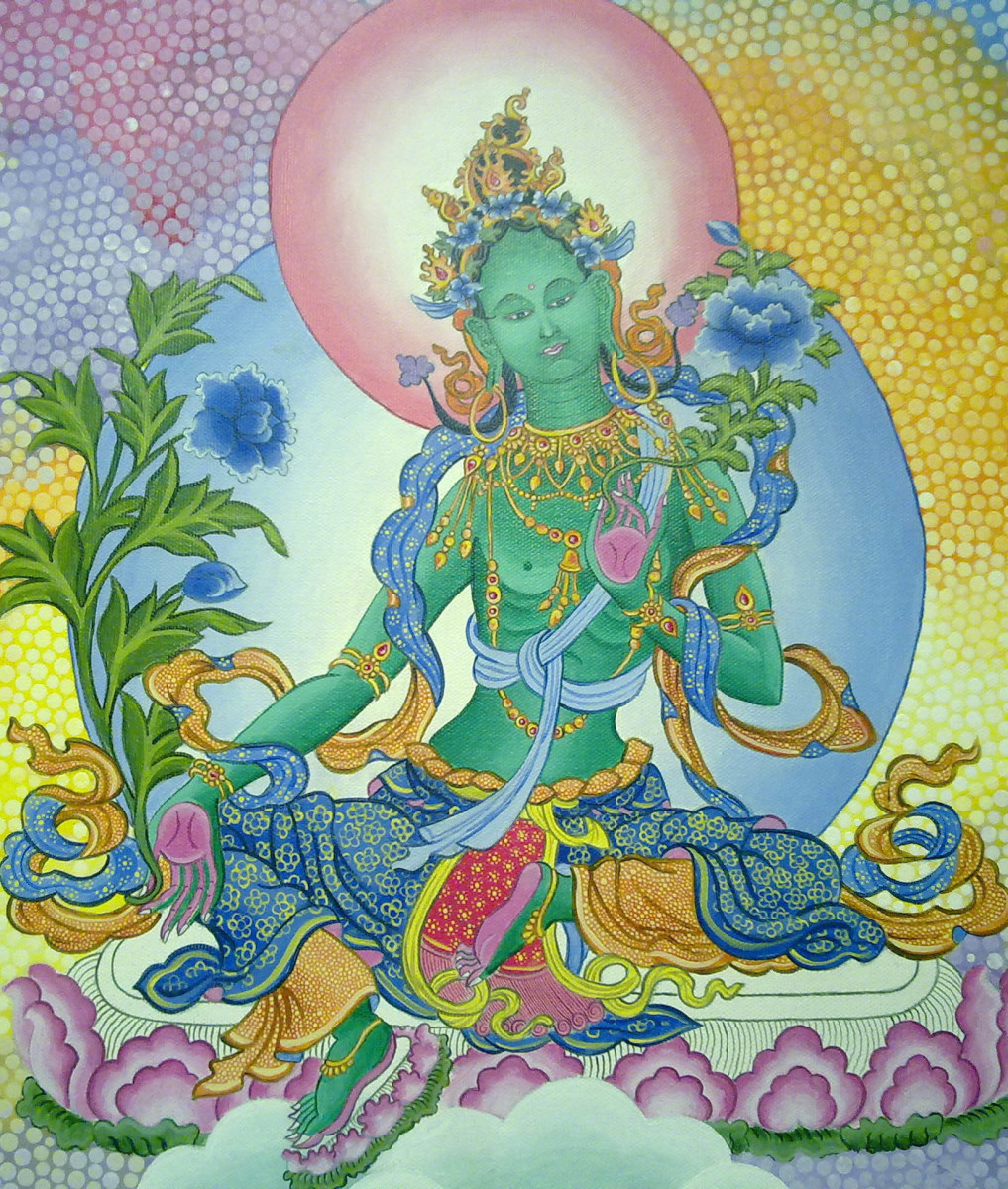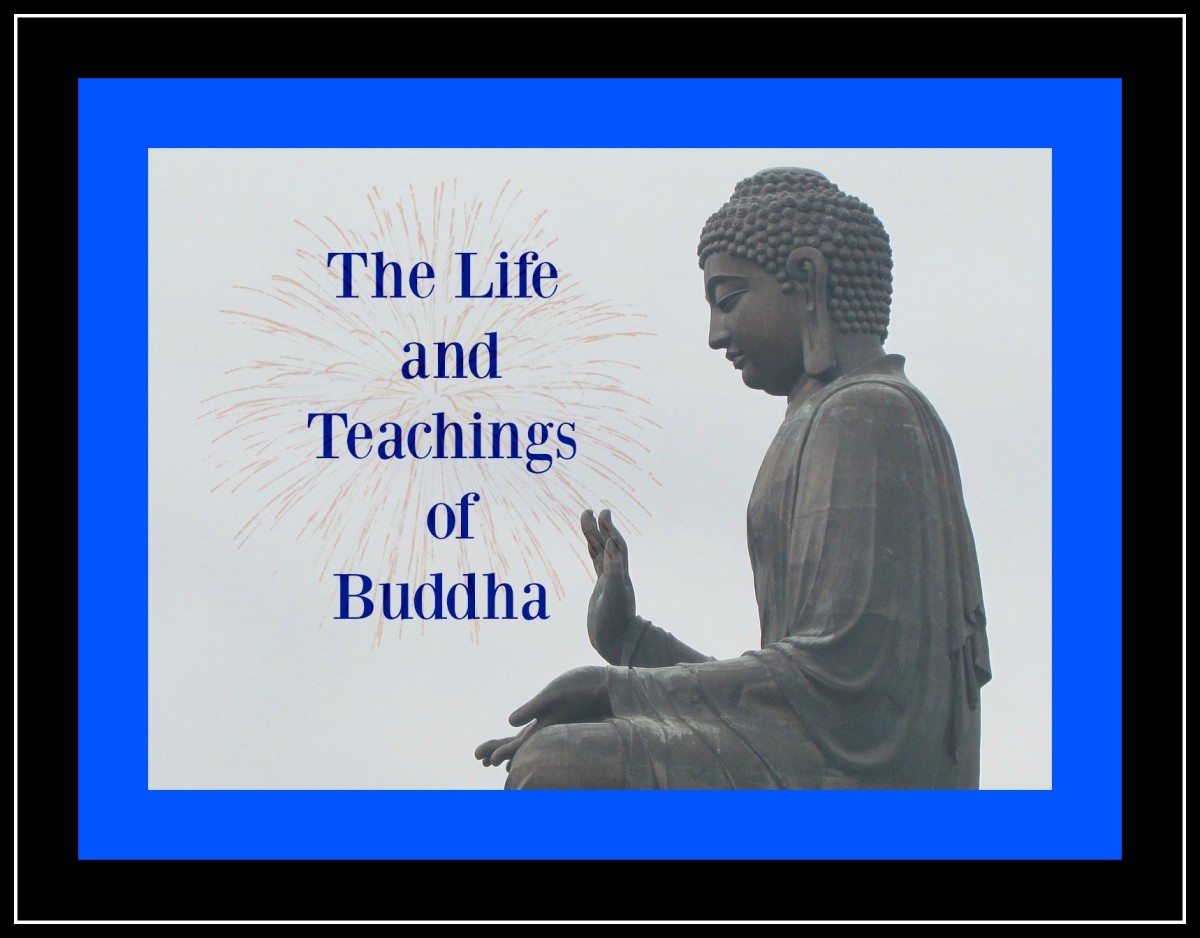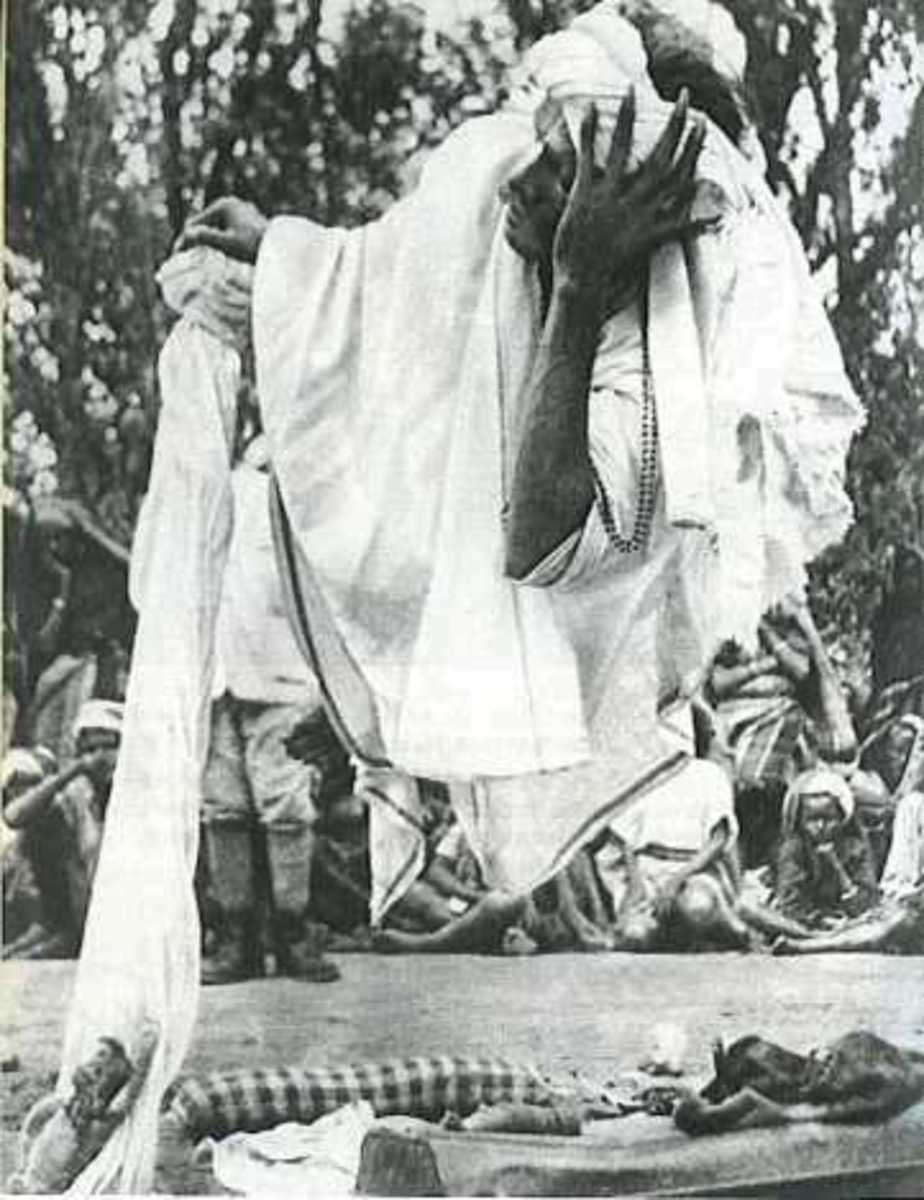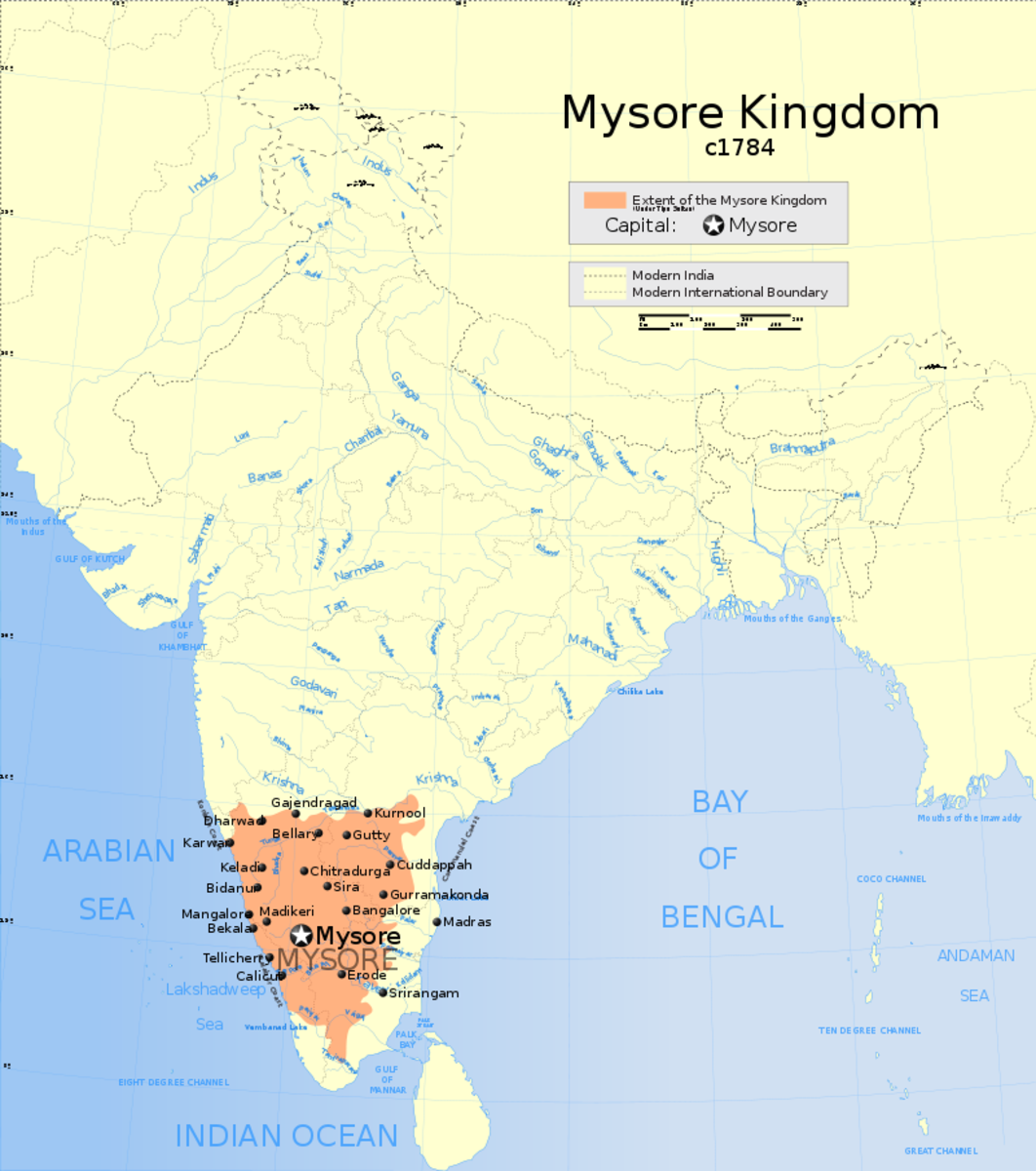- HubPages»
- Education and Science»
- History & Archaeology»
- History of Asia
Buddhism
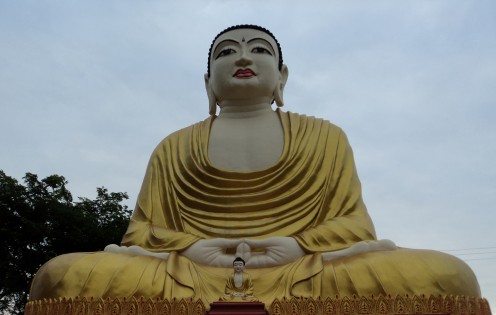
Hatred does not cease by hatred, but only by love; this is the eternal rule.
Buddhism
Buddha was born at Lumbini in 563 BC, and Died at Kusinagara in 483 BG. His real name is Siddhartha. He belonged to Sakya Clan. He was born to Shuddhodana (his father) and Mahamaya (his mother). He was married to Yashodhara and they had a son, Rahula.
The ideas enunciated by Buddha essentially constitute Buddhism. Buddha means the enlightened - the title given to Siddhartha after attaining enlightenment. The four noble truths revealed by Buddha in his first sermon at deer park in Sarnath constitute the core of Buddhism. The first truth is that the world is full of misery. The second truth is that the cause of this misery is greed. The third truth is that by conquering greed one can attain Nirvana end of the cycle of birth and death. The fourth truth is that the eight fold path is the means for conquering desire.
In addition, Buddhism appealed for austerity but not that of extreme variety like Jainism wherein Jina advocated nudity. He also prescribed a code of conduct for his followers. Its constituents are: not aspiring for others property, not indulging in violence, not taking intoxicants, not lying and not indulging in corruption.
Eight Fold Path
-
Right observation
-
Right determination
-
Right speech
-
Right action
-
Right livelihood
-
Right mental exercise
-
Right memory and
-
Right meditation.
Origin of Buddhism
The 6th century BC is a revolutionary period in the history of India as about 62 schools of thought ranging from the pre-determinism of Ajivakas to the total materialism of Charvakas including Buddhism and Jainism emerged as a reaction to the evils of Brahmanism which were antagonistic to the socio-economic conditions of the time. Brahmanism involved the expensive sacrifices and killing of oxen which were required by the new agriculture dependents on iron plough share. The need of the time was stopping the killing of oxen and other animals. Vaishyas acquired wealth by participating in trade which resulted out of the emergence of various crafts, thereby towns which in turn was possible because of the agricultural surplus. Though, they acquired wealth, their social position did not improve and they continued to be in the third position of the Varna system. This hurt their vanity and they were discontented with Brahmanism. Sudras were also unhappy because under the Varna system their function was to serve the three castes. For the same crime, punishment varied with the caste, status of a person, more in the case of Sudras, lesser in the case of Vaisyas, still lesser in the case of Kshatriyas, and far lesser in the case of Brahmins.
It is better to conquer yourself than to win a thousand battles. Then the victory is yours. It cannot be taken from you, not by angels or by demons, heaven or hell.
Causes for the popularity of Buddhism
- Discontent among Vaisyas and Sudras due to lower status in the varna system
- Moderate ideas of Buddhism unlike that of the ideas of Jainism like nudity which are difficult to follow
- Use of Pali language which was easily followed by people as it was a language of the common people
- Persuasive personality of Buddha
- Preaching, through Sangha consisting of full time preachers and
- Patronage of kings like Asoka who sent missionaries to West Asia and Sri Lanka, and Kanishka who sent missionaries to Central Asia and China.
Causes for the decline of Buddhism
- Degeneration of Sangha, giving up of Pali, idol worship, and reform of Brahmanism.
- By the 7th century AD, the Buddhist monasteries became centers of merceneries instead of missionaries. They were more interested in women and wine instead of preaching Buddhism. They even justified these evils by floating a new brand of Buddhism known as Vajrayana Buddhism in 8th century AD. This degeneration was due to the acquisition of wealth by the monasteries through the generous grants given by kings and Vaisyas.
- The Buddhist monks gave up Pali and adopited sanskrit in the 1st century AD which alienated common people who could not understand sanskrit.
- Adoption of idol worship by some Buddhists from the 1st century AD onwards blurred the distinction between Buddhism and Brahmanism.
- Brahmanism reformed itself by assuring heaven to Sudras which was earlier denied and by advocating bhakti instead of the earlier practice of prayers through priests, and emphasising on the need to, preserve cattle wealth. This reformed Brahmanism checked the exodus of the Sudras to Buddhism and Jainism.
- Due to all the above said reasons Buddhism lost considerable popularity by the end of the 12th century AD, even though some families in Bengal like the Chakmas in Chittagong hills continued to follow Buddhism even afterwards.
Buddhist literature
Buddhist literature - 3 Pitakas.
- Vinaya Pitaka - Code of conduct for the monks
- Sutta Pitaka - Preceipts of Buddha in parables
- Abhdhamma Pitaka - Philosophical speculations
Contributions of Buddhism
- Buddhism contributed to the cause of social equality, non-violent tradition, enrichment of education, and Pali language, and promotion of fine-arts, and rationality.
- Buddhism strove for social equality by admitting Sudras and women into the Sangha and by not attaching importance to the Varna system. It contributed non-violent tradition by laying emphasis on nonviolence and opposing sacrifices. It enriched learning by making monasteries centres of learning and by adopting Pali language for preaching and for writing 'thri-pitakas'. For example, the Nalanda and Vikramasila in Bihar and Vallabhi in Gujarat and Nagarjunakonda in Andhra Pradesh were great centres 'of learning.
- Regarding its contribution to fine-arts, the first human statues worshipped were those of Buddha. The famous sculptural pieces of the Buddha are the Mathura and Saranath Buddha. Gandhara school of art which emerged due to the interaction of the Greek art with the Indian art is also an example of the contribution of Buddhism to sculpture. Cave architecture flourished due to the patronage of Buddhists which led to carving of monasteries known as viharas along the hill slopes around Nasik in Maharashtra and Barabara hills in around Gaya in Bihar. Its contribution to painting through the Ajantha paintings is remarkable. Buddhism also promoted rationality by relying heavily on reason in their arguments.
Buddhist Councils
- First council was held at Rajagriha, it was presided by Mahakassapa immediately after the death of the Buddha. It is held to settle petty monastic disputes.
- The second council was held at Vaishali, schism Theravadins (Sthaviravadins) and Mahasanghikas.
- Third council was held at Pataliputra under the leadership of Mogaliputta Tissa and at the patronage of Asoka. In this council Mahasanghikas were considered heretics and expelled.
- Fourth council was held in Kashmir. It is held under the presidency of Vasumitra and at the patronage of Kanishka.
Sects in Buddhism
Mahasanghikas and newly formed sect Sarvastinivadins formed Mahayana (Salvation of all beings) sect and Thervadins came to be known as Hinayana (Individual salvation) sect. During 8th century AD. Vajrayana or the Thunderbolt Vehicle cult has developed based on the concept of Tantrism.
Mahayanists are Idol worshipers. Hinayanists are symbol worshipers (stupa, tree, etc) - stupa recalling Buddha's Parinivarana, and the tree recalling his enlightenment.
Also See:
- All about Jainism
The ideas followed by Jains constitute Jainism. Origin of Jainism. Factors that contributed to the spread of Jainism, Causes for the limited popularity of the Jainism. Jainism and Jain councils.


